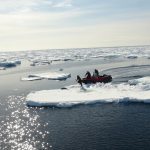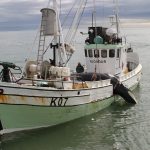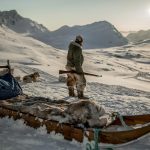Hunting of marine mammals often takes place under challenging and demanding circumstances. A rough environment (sea and ice), often cold temperatures, and moving targets make it a difficult and sometimes life-threatening endeavour. Three factors are of particular importance: 1) the safety of the hunter, 2) the efficiency of the hunt, and 3) animal welfare. NAMMCO and its member countries are at the forefront here.
Intimate knowledge of the animal, the surrounding circumstances, and the equipment are of the utmost importance. Traditionally, knowledge was transferred from generation to generation – as young hunters accompanied the elders on hunts. Today there are also other possibilities and means of transferring knowledge. NAMMCO has developed hunting manuals for the use and maintenance of weapons and equipment deployed in hunting. These manuals have been widely dispersed to hunters in the member countries, and are part of the mandatory training courses held for hunters. NAMMCO has also developed guidelines to test the efficiency of rifle ammunition and has carried out shooting trials to examine the effect of different rifle projectiles.
Animal welfare, measured by how quickly an animal is rendered unconscious or dead, has improved significantly the last 35 years. The average time from the whale is hit to being unconscious has decreased from 11 minutes to 1 minute in the Norwegian minke whale hunt. Likewise, the number of whales that die instantaneously has increased from 17 % in 1981 to 82 % in 2012. And in Iceland 84 % of all fin whales hunted die instantaneously. You can read more about time to death on large whales here.

Perfect hit with the grenade, Norway © Scanfishfoto/fiskeri.no/H.P.Tysnes
When hunting, there is always the possibility of hitting an animal without being able to retrieve it. This phenomenon, often referred to as “Struck and lost” represents a major challenge, and is an ongoing concern for NAMMCO. NAMMCO strives to decrease the number of struck and lost animals, by identifying the reasons and suggesting ways to avoid and/or diminish the causes. Important factors are knowledge of the optimal target area and shooting angle, the equipment and not the least training. Go here to read more on struck and lost.
Improvements in hunting methods and equipment require financial resources, involvement of both scientists and hunters, and reliable tools for performance monitoring.
Often a hunter, with his specific User Knowledge, will view a situation differently from a scientist or a veterinarian. All three carry a different set of knowledge and information, all valuable and important, that are all needed to achieve the best possible results. Mutual trust and respect are major elements in a successful dialogue between different actors. The Committee on Hunting Methods has organised several international workshops and expert group meetings, and over time these have developed into arenas where hunters, managers, scientists and veterinarians sit together and openly discuss. NAMMCO continues to work towards strengthening this dialogue.
To read more, see Committee on Hunting Methods.






